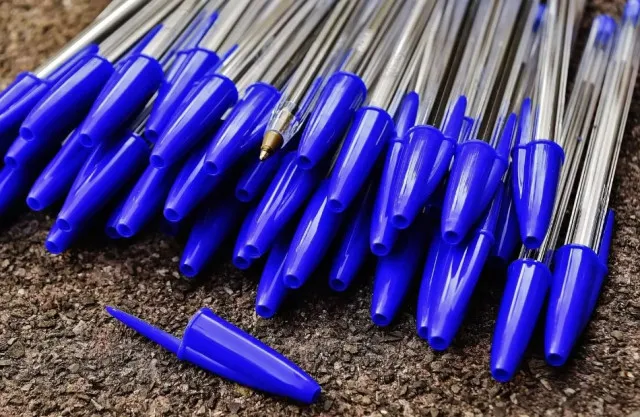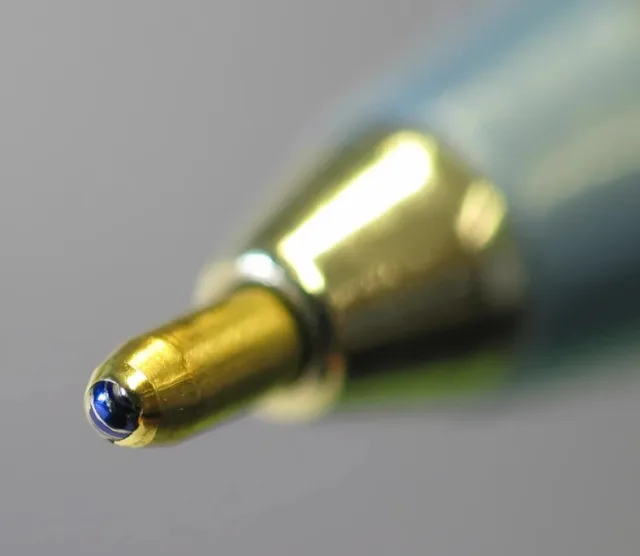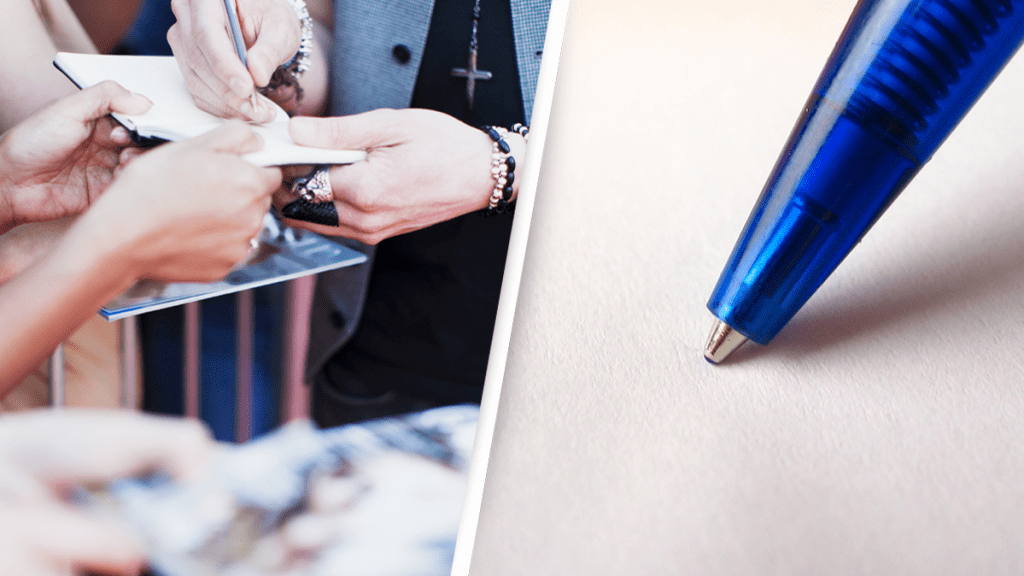Autographs are treasured by fans worldwide, offering a tangible connection to their favorite celebrities. But if you’ve ever noticed, many stars tend to shy away from signing their autographs in blue ink. What seems like a minor preference has stirred curiosity among fans and even led to viral moments like Claire Foy’s refusal to use a blue pen. So, what’s behind this aversion to blue ink? The answer lies in the growing need for security and authenticity in the world of celebrity autographs.

Image Credit: Getty
The Claire Foy Incident: A Viral Moment
In one viral instance, actress Claire Foy, famous for her portrayal of Queen Elizabeth II in The Crown, was approached by a fan seeking her autograph. When handed a blue pen, she simply replied, “I don’t do blue.” This seemingly small act sparked widespread discussion on social media, with many wondering why she, like many celebrities, avoids signing with blue ink.
While some speculated that her refusal was due to personal preference or even arrogance, the real reason behind this choice is much more practical—and rooted in protecting the value and authenticity of celebrity signatures.
The Practical Reason Behind Avoiding Blue Ink
Forgery Prevention
One of the primary reasons many celebrities avoid blue ink when signing autographs is to prevent forgery. Blue ink is easier to scan and reproduce than black ink. Modern technology allows individuals to quickly and accurately scan blue-ink signatures, making it easier for forgers to create duplicates. These forgeries can then be passed off as authentic, often sold on the internet for profit. By opting for black ink, which doesn’t scan or replicate as easily, celebrities reduce the risk of having their signatures forged.
The Rise of Online Marketplaces
In today’s digital age, memorabilia signed by celebrities can fetch high prices on platforms like eBay and other auction sites. Unscrupulous sellers may attempt to sell forged autographs, capitalizing on the fame of celebrities. This creates a market for counterfeit signatures, and unfortunately, fans are often the ones paying the price—both literally and figuratively.
Celebrities have become increasingly aware of this issue, and many have adopted measures to safeguard the authenticity of their signatures. Using black ink is one of the simplest yet most effective ways to protect against forgeries, ensuring that fans who seek their autographs are getting a genuine piece of memorabilia.
Black Ink: The Preferred Choice for Autographs
Harder to Replicate
Black ink is the preferred choice for celebrities because it is much harder to replicate accurately. When scanned or copied, black ink signatures often lose clarity or detail, making it more challenging for potential forgers to reproduce them. This added layer of protection helps celebrities ensure that their autographs maintain their integrity, even as they become highly sought-after collectibles.

Celebrities avoid blue ink to prevent easy forgery. Image Credit: Getty
Distinct from Printed Documents
Another reason why black ink is favored is that it stands out against pre-printed documents. Many contracts, letters, or signed materials that celebrities autograph already feature black text, making it easier for their handwritten signature to stand out. Using blue ink, on the other hand, risks blending in with other printed material, reducing its visual impact.
The Social Media Reaction: Amusement and Insight
When Claire Foy’s “no blue pen” moment went viral, the internet quickly responded with a mix of amusement and insight. While some users joked about the situation, others offered explanations about why blue ink is often avoided.
One social media user humorously remarked, “I still write in blue ink, draw in black, and avoid signing in red especially if the guy holding the paper has horns!” Another commenter added, “My attorney always makes me sign in blue so they can distinguish the original from a copy.”
Many of these comments touch on the broader historical context of blue ink’s use in legal documents. Blue ink has often been used for signing contracts to distinguish the original from photocopies, especially back when copy machines could only replicate in black and white. However, in the world of autographs, using blue ink carries the opposite risk—it makes signatures easier to scan and fake.

To prevent forgery, many stars now sign autographs in black ink. Image Credit: Getty
Forgery in the Digital Age: A Growing Concern
How Technology Has Changed the Landscape
In the past, autographs were typically exchanged in person, and forgery was more difficult to achieve. However, with the advent of high-resolution scanners and printers, it’s easier than ever for someone to replicate a celebrity’s signature. Digital forgeries have become a lucrative business, and collectors can easily be fooled into purchasing fake memorabilia if they aren’t careful.
Autographs as High-Value Collectibles
Autographs from famous celebrities, especially those who rarely sign, can be worth thousands of dollars. As their value increases, so does the temptation for forgers to create counterfeit signatures. This issue is particularly relevant in the sports, entertainment, and music industries, where signed memorabilia can quickly appreciate in value.
To combat this, celebrities and their representatives take several precautions, such as signing autographs with pens that make replication difficult. In addition to choosing black ink, some stars may use specific markers or pens that leave distinct imprints, adding another layer of authenticity.
Celebrity Strategies for Protecting Their Signatures
Personalized Autographs
Some celebrities choose to personalize their autographs by adding unique details, such as drawings or personal notes, to make them harder to replicate. This extra touch not only adds sentimental value but also serves as an additional measure to prevent forgery. A simple name is easy to duplicate, but adding personal elements to a signature makes it unique to each fan.

Certificate of Authenticity
In the world of high-value autographs, many celebrities or their agents offer a certificate of authenticity when signing memorabilia. This document serves as proof that the signature is genuine and ensures that buyers and collectors can trust the legitimacy of the autograph. Often, these certificates are accompanied by a serial number that can be tracked in an official database, further reducing the risk of forgery.
Conclusion: A Practical Solution to a Modern Problem
While it may seem like a small detail, celebrities avoiding blue ink for autographs is rooted in practicality. With the rise of forgery in today’s digital age, protecting the authenticity of signatures has become more important than ever. By using black ink, celebrities reduce the chances of their autographs being copied, ensuring that their fans receive a genuine keepsake.
Claire Foy’s viral moment may have sparked confusion at first, but her refusal to sign with a blue pen reflects the larger efforts celebrities take to combat forgery. So next time you seek an autograph from your favorite star, don’t be surprised if they pass on the blue pen—it’s all about keeping the real thing, well, real.


